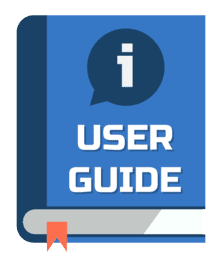The Urgency of Implementing Flexible Working Arrangements in Government Organizations in Indonesia
Abstract
The existence of triple disruption (Digital Disruption, Pandemic Disruption and Millennial Disruption) in the era of industrial revolution 4.0 and the Covid-19 pandemic towards society 5.0 makes the challenges of the current government administration increasingly complex, providing very dynamic changes that cannot be avoided, including changing the work model from a traditional model to a modern model, one of which is the Flexible Working Arrangement (FWA). These changes, however, have several positive and negative effects with some associated risks that must be known and anticipated by government organizations. Therefore, this article examines and explains how the urgency of implementing FWA in government organizations captured from various points of view such as how the types of FWA models and scheme, the benefits and impacts produced, the challenges faced, and the negative impacts that need to be anticipated in the implementation of FWA. To obtain effective and efficient results Government organizations can choose FWA models and schemes according to organizational needs by mapping stakeholders involved in the formulation of FWA policies, mapping organizational and employee position characteristics, conducting FWA standards and methods, then providing FWA supporting tools/facilities (information system, technology, etc.).
Keywords
Full Text:
PDFReferences
Ahmad, A. R., Mohamed Idris, M. T., & Hashim, M. H. (2013). A study of flexible working hours and motivation. Asian Social Science, 9(3), 208–215. https://doi.org/10.5539/ass.v9n3p208
Arunmozhi, M., Persis, J., Sreedharan, V. R., Chakraborty, A., Zouadi, T., & Khamlichi, H. (2021). Managing the resource allocation for the COVID-19 pandemic in healthcare institutions: a pluralistic perspective. International Journal of Quality & Reliability Management, ahead-of-p(ahead-of-print). https://doi.org/10.1108/IJQRM-09-2020-0315
Bellmann, L., & Hübler, O. (2021). Working from home, job satisfaction and work–life balance – robust or heterogeneous links? International Journal of Manpower, 42(3), 424–441. https://doi.org/10.1108/IJM-10-2019-0458
Bentley, T. A., Teo, S. T. T., McLeod, L., Tan, F., Bosua, R., & Gloet, M. (2016). The role of organisational support in teleworker wellbeing: A socio-technical systems approach. Applied Ergonomics, 52, 207–215. https://doi.org/https://doi.org/10.1016/j.apergo.2015.07.019
Cech, E. A., & O’Connor, L. T. (2017). ‘Like second-hand smoke’: the toxic effect of workplace flexibility bias for workers’ health. Community, Work & Family, 20(5), 543–572. https://doi.org/10.1080/13668803.2017.1371673
Chadee, D., Ren, S., & Tang, G. (2021). International Journal of Hospitality Management Is digital technology the magic bullet for performing work at home ? Lessons learned for post COVID-19 recovery in hospitality management. International Journal of Hospitality Management, 92(October 2020), 102718. https://doi.org/10.1016/j.ijhm.2020.102718
Choi, S. (2017). Managing Flexible Work Arrangements in Government: Testing the Effects of Institutional and Managerial Support. Public Personnel Management, 47(1), 26–50. https://doi.org/10.1177/0091026017738540
Choi, S. (2018). Managing Flexible Work Arrangements in Government: Testing the Effects of Institutional and Managerial Support. Public Personnel Management, 47(1), 26–50. https://doi.org/10.1177/0091026017738540
Coelho, F. A., Faiad, C., Rego, M. C. B., & Ramos, W. M. (2020). What Brazilian workers think about flexible work and telework? International Journal of Business Excellence, 20(1), 16–31. https://doi.org/10.1504/IJBEX.2020.104842
Como, R., Hambley, L., & Domene, J. (2021). An exploration of work-life wellness and remote work during and beyond COVID-19. Canadian Journal of Career Development, 20(1), 46–56.
Davidescu, A. A. M., Apostu, S. A., Paul, A., & Casuneanu, I. (2020). Work flexibility, job satisfaction, and job performance among romanian employees-Implications for sustainable human resource management. Sustainability (Switzerland), 12(15). https://doi.org/10.3390/su12156086
De Menezes, L. M., & Kelliher, C. (2011). Flexible working and performance: A systematic review of the evidence for a business case. International Journal of Management Reviews, 13(4), 452–474. https://doi.org/10.1111/j.1468-2370.2011.00301.x
Elbing, A. O., Gadon, H., & Gordon, J. R. M. (1975). Flexible Working Hours: The Missing Link. California Management Review, 17(3), 50–57. https://doi.org/10.2307/41162148
Elbing, J. R. M. O. (1974). Flexible Working Hours: It’s About Time. In Harvard business review. (Vol. 52, Issue 1, pp. 18–33). Graduate School of Business Administration, Harvard University.
Felstead, A., & Henseke, G. (2017). Assessing the growth of remote working and its consequences for effort, well-being and work-life balance. New Technology, Work and Employment, 32(3), 195–212. https://doi.org/10.1111/ntwe.12097
Franken, E., Bentley, T., Shafaei, A., Farr-Wharton, B., Onnis, L. A., & Omari, M. (2021). Forced flexibility and remote working: opportunities and challenges in the new normal. Journal of Management and Organization, 27(6), 1131–1149. https://doi.org/10.1017/jmo.2021.40
Furmańczyk, J., & Kaźmierczyk, J. (2020). Economic, psychological, and social consequences of the Covid-19 pandemic. European Journal of Transformation Studies, 8, 36–54.
Gascoigne, C., & Kelliher, C. (2017). The transition to part-time: How professionals negotiate ‘reduced time and workload’ i-deals and craft their jobs. Human Relations, 71(1), 103–125. https://doi.org/10.1177/0018726717722394
Georgsdottir, A. S., & Getz, I. (2004). How Flexibility Facilitates Innovation and Ways to Manage it in Organizations. Creativity and Innovation Management, 13(3), 166–175. https://doi.org/10.1111/j.0963-1690.2004.00306.x
Giovanis, E. (2018). The relationship between flexible employment arrangements and workplace performance in Great Britain. International Journal of Manpower, 39(1), 51–70. https://doi.org/10.1108/IJM-04-2016-0083
Groen, B. A. C., van Triest, S. P., Coers, M., & Wtenweerde, N. (2018). Managing flexible work arrangements: Teleworking and output controls. European Management Journal, 36(6), 727–735. https://doi.org/https://doi.org/10.1016/j.emj.2018.01.007
Hafermalz, E., & Riemer, K. (2021). Productive and connected while working from home: what client-facing remote workers can learn from telenurses about ‘belonging through technology.’ European Journal of Information Systems, 30(1), 89–99. https://doi.org/10.1080/0960085X.2020.1841572
Hirsch-Kreinsen, H. (2016). Digitization of industrial work: development paths and prospects. Journal for Labour Market Research, 49(1), 1–14. https://doi.org/10.1007/s12651-016-0200-6
Hopkins, L., & Pedwell, G. (2021). The COVID PIVOT – Re-orienting Child and Youth Mental Health Care in the Light of Pandemic Restrictions. Psychiatric Quarterly, 92(3), 1259–1270. https://doi.org/10.1007/s11126-021-09909-8
Houghton, K. R., Foth, M., & Hearn, G. (2018). Working from the Other Office: Trialling Co-Working Spaces for Public Servants. Australian Journal of Public Administration, 77(4), 757–778. https://doi.org/10.1111/1467-8500.12317
Irawati, E. (2019). Menyongsong Flexible Working Arrangement bagi ASN. Jurnal Analis Kebijakan, 3(1), 108–113.
Lockwood, G., & Nath, V. (2021). The monitoring of tele-homeworkers in the UK: legal and managerial implications. International Journal of Law and Management, 63(4), 396–416. https://doi.org/10.1108/IJLMA-10-2020-0281
Ma’rifah, D. (2020). Implementasi Work From Home: Kajian Tentang Dampak Positif, Dampak Negatif Dan Produktivitas Pegawai. Civil Service, 14(2), 53–64.
Mart, A. (2011). The Dynamics of Labour Flexibility : Relationships between Employment Type and Innovativeness. June. https://doi.org/10.1111/j.1467-6486.2010.00935.x
MartÃnez-Sánchez, Ã., Vela-Jimenez, M. J., Abella-Garces, S., & Gorgemans, S. (2019). Flexibility and innovation: moderator effects of cooperation and dynamism. Personnel Review, 48(6), 1548–1564. https://doi.org/10.1108/PR-12-2017-0397
Rubery, J., Keizer, A., & Grimshaw, D. (2016). Flexibility bites back: the multiple and hidden costs of flexible employment policies. Human Resource Management Journal, 26(3), 235–251. https://doi.org/https://doi.org/10.1111/1748-8583.12092
Soga, L. R., Bolade-Ogunfodun, Y., Mariani, M., Nasr, R., & Laker, B. (2022). Unmasking the other face of flexible working practices: A systematic literature review. Journal of Business Research, 142(January), 648–662. https://doi.org/10.1016/j.jbusres.2022.01.024
Spiegelaere, S. De, Gyes, G. Van, & Hootegem, G. Van. (2014). Labour flexibility and innovation , complementary or concurrent strategies ? A review of the literature. https://doi.org/10.1177/0143831X13492831
Suryanto, A., Si, M., Sudrajat, A., & Suwarno, M. Y. (2021). Manajemen ASN Outlook (Issue February). https://www.bppdapwi.com
Swailes, S. (2016). The Cultural Evolution of Talent Management: A Memetic Analysis. Human Resource Development Review, 15(3), 340–358. https://doi.org/10.1177/1534484316664812
Tasrin, krismiyati, Wahyuadianto, A., Pratiwi, P., & Masrully, M. (2021). Evaluation Study of the Implementation of Flexible Working Arrangement in Public Sector Organization during Covid-19 Pandemic. BISNIS & BIROKRASI: Jurnal Ilmu Administrasi Dan Organisasi, 28(3). https://doi.org/10.20476/jbb.v28i3.1274
Valenduc, Gg., & Vendramin, P. (2017). Work in the Digital Economy: Sorting the Old from the New. SSRN Electronic Journal. https://doi.org/10.2139/ssrn.2770405
van der Lippe, T., & Lippényi, Z. (2020). Co-workers working from home and individual and team performance. New Technology, Work and Employment, 35(1), 60–79. https://doi.org/10.1111/ntwe.12153
Vasconcelos, P., Furtado, E., & Rogerio, P. (2015). Computers in Human Behavior An approach of multidisciplinary criteria for modeling alternatives of flexible working. 51, 1054–1060. https://doi.org/10.1016/j.chb.2015.02.071
Wheatley, D. (2012). Good to be home? Time-use and satisfaction levels among home-based teleworkers. New Technology, Work and Employment, 27(3), 224–241. https://doi.org/https://doi.org/10.1111/j.1468-005X.2012.00289.x
Williams, P. (2019). Support for supervisors: HR enabling flexible work. Employee Relations, 41(5), 914–930. https://doi.org/10.1108/ER-03-2018-0077
Yu, R., Burke, M., & Raad, N. (2019). Exploring impact of future flexible working model evolution on urban environment , economy and planning. Journal of Urban Management, 8(3), 447–457. https://doi.org/10.1016/j.jum.2019.05.002
Zarei, H., Yazdifar, H., & Soofi, F. (2021). The perceived impact of working agreements toward employed female in the accounting profession: evidence from Iran. Journal of Applied Accounting Research, 22(2), 197–222. https://doi.org/10.1108/JAAR-05-2020-0099
Refbacks
- There are currently no refbacks.
@2017-2024
Jl. Hayam Wuruk No. 34-38 Bandung
Politeknik STIA LAN Bandung
Powered by OJS (Open Jounal Systems)


